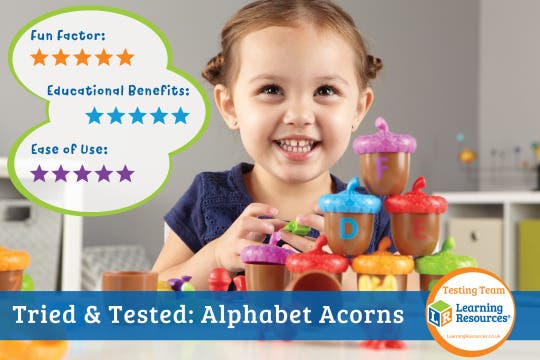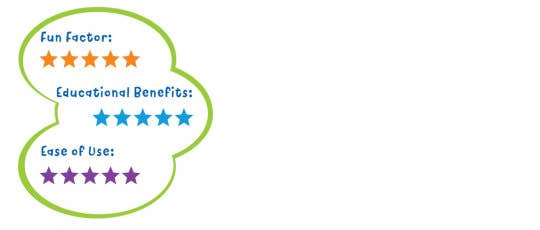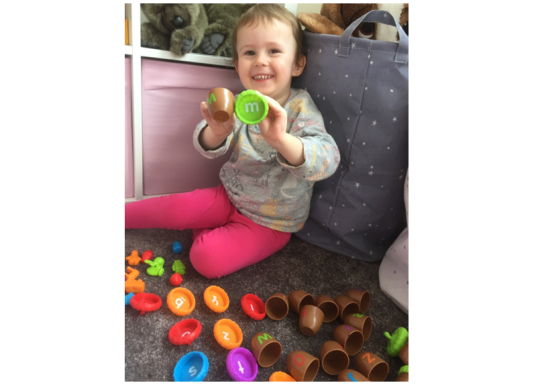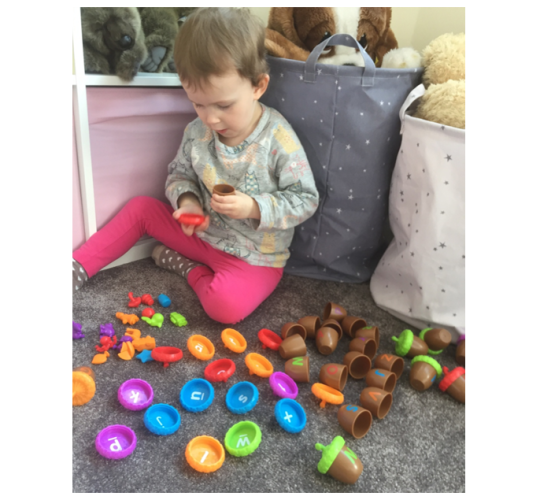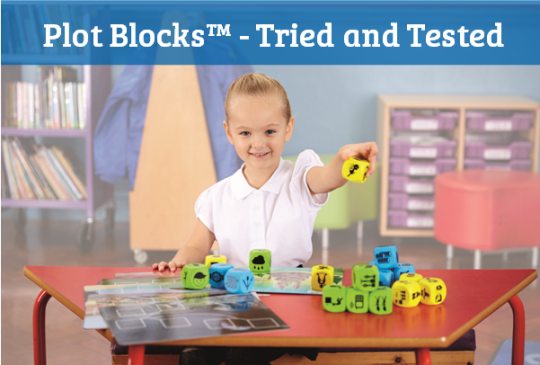What is Phonics?
- Learning Resources Posted On Mar 1, 2023 | Learn
What is phonics? Learn about phonics and how your child’s school uses phonics to help your child learn to read and write.
This is a demo store. No orders will be fulfilled.
FREE DELIVERY on all UK online orders over £50!FREE DELIVERY on all UK online orders over £50!
What is phonics? Learn about phonics and how your child’s school uses phonics to help your child learn to read and write.
What is phonics? Learn about phonics and how your child’s school uses phonics to help your child learn to read and write.
Reading fluently and confidently is an essential skill that will profoundly help your child’s learning and development. To ensure year 1 children are on track to building the literacy skills they need at school and beyond, schools in England do a year 1 Phonics Screening Check in June.
This is what the Department for Education (DfE) calls a “light touch test” and helps teachers assess whether children have grasped the foundation of phonics and decoding words by the end of year 1.
Check out other phonics related content:
For most children in England, their first year of primary school (year 1) is the year they turn 6. The DfE requires all children who have reached the age of 6 by the end of the school year to do a phonics screening test.
The purpose of this phonics screening assessment is to ensure your child has met the attainment targets set out by the DfE to ensure they’ve grasped the basics of phonics and are on track to becoming confident, fluent readers.
During the test, your child will have to read aloud 40 real words and pseudo words (also known as nonsense or alien words). Your child may be familiar with some of these words, while others may be new to them. The purpose of giving your child non-words is to check whether they have the ability to decode these words rather than relying on their memory of vocabulary skills.
Your child will be given the chance to familiarise themselves with the test format using a practise sheet with 4 pseudo words and 4 real words on each side.
The first words on the assessment test sheet are simple 3-letter words, and then these move on to include 4, 5, and 6-letter words. The assessment is done one-on-one with your child’s teacher and according to the DfE guidance, should take between 4-9 minutes.
The results are collated in order for your child’s school to benchmark their pupils’ performance. The school will also share your child’s results including whether or not they have met the expected standards with you by the end of the summer term. If your child needs extra support, your school will outline what that will be.
Your child’s school will be using a systematic synthetic phonics programme (SSP) validated by the DfE. Speak to your child’s teacher to find out what you need to know to support their teaching at home. For example, your child’s teacher will be able to let you know which sounds and letters your child will be learning each week. They can also recommend books with the right level which you can read together to practise at home.
The DfE has published previous screening check materials which families can access to learn more about the test.
However, there’s an overwhelming volume of evidence to show the benefits of encouraging a love of reading in your child at home. Reading with your child daily, helping your child practise phonics, playing games such as I Spy, and supporting their overall reading and writing skills development will help them succeed at school and beyond.
Learning Resources has lots of fun games and resources to practise phonics skills and build reading confidence in your child. Browse our phonics resources and sight words and vocabulary resources to help your child love to learn.
Reading fluently and confidently is an essential skill that will profoundly help your child’s learning and development. To ensure year 1 children are on track to building the literacy skills they need at school and beyond, schools in England do a year 1 Phonics Screening Check in June.
This is what the Department for Education (DfE) calls a “light touch test” and helps teachers assess whether children have grasped the foundation of phonics and decoding words by the end of year 1.
Check out other phonics related content:
For most children in England, their first year of primary school (year 1) is the year they turn 6. The DfE requires all children who have reached the age of 6 by the end of the school year to do a phonics screening test.
The purpose of this phonics screening assessment is to ensure your child has met the attainment targets set out by the DfE to ensure they’ve grasped the basics of phonics and are on track to becoming confident, fluent readers.
During the test, your child will have to read aloud 40 real words and pseudo words (also known as nonsense or alien words). Your child may be familiar with some of these words, while others may be new to them. The purpose of giving your child non-words is to check whether they have the ability to decode these words rather than relying on their memory of vocabulary skills.
Your child will be given the chance to familiarise themselves with the test format using a practise sheet with 4 pseudo words and 4 real words on each side.
The first words on the assessment test sheet are simple 3-letter words, and then these move on to include 4, 5, and 6-letter words. The assessment is done one-on-one with your child’s teacher and according to the DfE guidance, should take between 4-9 minutes.
The results are collated in order for your child’s school to benchmark their pupils’ performance. The school will also share your child’s results including whether or not they have met the expected standards with you by the end of the summer term. If your child needs extra support, your school will outline what that will be.
Your child’s school will be using a systematic synthetic phonics programme (SSP) validated by the DfE. Speak to your child’s teacher to find out what you need to know to support their teaching at home. For example, your child’s teacher will be able to let you know which sounds and letters your child will be learning each week. They can also recommend books with the right level which you can read together to practise at home.
The DfE has published previous screening check materials which families can access to learn more about the test.
However, there’s an overwhelming volume of evidence to show the benefits of encouraging a love of reading in your child at home. Reading with your child daily, helping your child practise phonics, playing games such as I Spy, and supporting their overall reading and writing skills development will help them succeed at school and beyond.
Learning Resources has lots of fun games and resources to practise phonics skills and build reading confidence in your child. Browse our phonics resources and sight words and vocabulary resources to help your child love to learn.
Learn about phonics and make your own phonics game at home with a fun, simple teacher-created upcycling project you can make in minutes. It’s ideal for beginner readers to boost reading fluency.
Learn about phonics and make your own phonics game at home with a fun, simple teacher-created upcycling project you can make in minutes. It’s ideal for beginner readers to boost reading fluency.
We're on a mission to help support learning phonics at home, keep children's brains engaged, and develop skills in important learning areas. We've teamed up with Kerri Hibberd, a teacher and phonics coordinator with over 10 years experience, to find out more about phonics and how to support this area of learning at home.
Download your free Hot Dots printable worksheets on our home learning page.
What is Phonics?Words are made up of small units of sound called phonemes. Phonics teaches children to listen carefully and identify the phonemes that make up each word. This helps children learn to read and spell words. As the English language is so tricky and complex it could be referred to as a code. Phonics teaches children how to break this code by learning the easier bits first, before progressing onto the more complex phonemes and sounds.
There has been a huge shift in the past few years in how we teach reading in UK schools. This is having a significant impact and helping many children learn to read and spell. Phonics is recommended as the first strategy that children should be taught in helping them learn to read. It runs alongside other teaching methods such as guided reading and shared reading that help children develop all the other vital reading skills, while hopefully giving them a real love of reading.

What is blending?We teach children to read by teaching them how to blend. This is when children say the sounds that make up a word and are able to merge these sounds together until they can hear what the word is. This skill is vital in learning to read and is the skill that is tested during the phonics screening test at the end of Year 1 at school.
The best way to practise phonics with your children at home is to make learning fun and ensure they know and can pronounce all their phonemes and sounds correctly. Learning Resources have some fantastic products to support learning through play that I myself am using with my own daughter. Hot Dots Let's Learn! Jolly Phonics Set is a self-checking activity that your child can use independently.
Image: Learning Resources Hot Dots Let's Learn! Jolly Phonics Set
What is Hot Dots?Hot Dots is a unique self-checking system designed to build children’s confidence and support classroom learning. Sets cover maths and phonics. Just press the Hot Dots pen to the answer dot on the activity card for an immediate response including colourful lights, fun phrases and even silly sounds! The pen flashes green lights with encouraging sounds and phrases for correct answers and red lights with gentle redirection for incorrect answers.
Images: Learning Resources Original Talking Hot Dots Pen and Hot Dots Jr Ace the Talking, Teaching Dog Pen
Hot Dots Jolly PhonicsThis phonics specific product has been developed in collaboration with Jolly Learning, the founding company of Jolly Phonics teaching framework. It has a fun and child-centred approach to teaching literacy through synthetic phonics. The set features engaging cards with colourful illustrations of familiar characters.
Hot Dots® Jr.Introduce key early learning skills with these colourful activity sets. Each set includes double-sided cards with self-checking activities that help to develop age-appropriate skills from problem solving to the alphabet and phonics.
Image: Learning Resources Hot Dots Jr. Beginning Phonics Card Set
Shop our Hot Dots range here.
#LoveLearning
We're on a mission to help support learning phonics at home, keep children's brains engaged, and develop skills in important learning areas. We've teamed up with Kerri Hibberd, a teacher and phonics coordinator with over 10 years experience, to find out more about phonics and how to support this area of learning at home.
Download your free Hot Dots printable worksheets on our home learning page.
What is Phonics?Words are made up of small units of sound called phonemes. Phonics teaches children to listen carefully and identify the phonemes that make up each word. This helps children learn to read and spell words. As the English language is so tricky and complex it could be referred to as a code. Phonics teaches children how to break this code by learning the easier bits first, before progressing onto the more complex phonemes and sounds.
There has been a huge shift in the past few years in how we teach reading in UK schools. This is having a significant impact and helping many children learn to read and spell. Phonics is recommended as the first strategy that children should be taught in helping them learn to read. It runs alongside other teaching methods such as guided reading and shared reading that help children develop all the other vital reading skills, while hopefully giving them a real love of reading.

What is blending?We teach children to read by teaching them how to blend. This is when children say the sounds that make up a word and are able to merge these sounds together until they can hear what the word is. This skill is vital in learning to read and is the skill that is tested during the phonics screening test at the end of Year 1 at school.
The best way to practise phonics with your children at home is to make learning fun and ensure they know and can pronounce all their phonemes and sounds correctly. Learning Resources have some fantastic products to support learning through play that I myself am using with my own daughter. Hot Dots Let's Learn! Jolly Phonics Set is a self-checking activity that your child can use independently.
Image: Learning Resources Hot Dots Let's Learn! Jolly Phonics Set
What is Hot Dots?Hot Dots is a unique self-checking system designed to build children’s confidence and support classroom learning. Sets cover maths and phonics. Just press the Hot Dots pen to the answer dot on the activity card for an immediate response including colourful lights, fun phrases and even silly sounds! The pen flashes green lights with encouraging sounds and phrases for correct answers and red lights with gentle redirection for incorrect answers.
Images: Learning Resources Original Talking Hot Dots Pen and Hot Dots Jr Ace the Talking, Teaching Dog Pen
Hot Dots Jolly PhonicsThis phonics specific product has been developed in collaboration with Jolly Learning, the founding company of Jolly Phonics teaching framework. It has a fun and child-centred approach to teaching literacy through synthetic phonics. The set features engaging cards with colourful illustrations of familiar characters.
Hot Dots® Jr.Introduce key early learning skills with these colourful activity sets. Each set includes double-sided cards with self-checking activities that help to develop age-appropriate skills from problem solving to the alphabet and phonics.
Image: Learning Resources Hot Dots Jr. Beginning Phonics Card Set
Shop our Hot Dots range here.
#LoveLearning
READ MORE